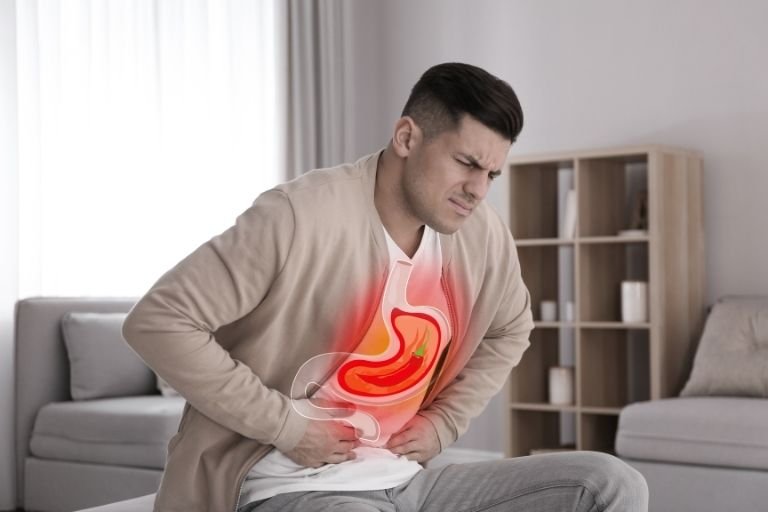- Fitwell Physiotherapy
Diastasis Recti

Diastasis recti, often referred to as abdominal separation, is a common condition among pregnant women and sometimes occurs in newborns and men. It’s characterized by the stretching or partial separation of the rectus abdominis muscles, the paired muscles that run vertically along the front of the abdomen, creating a visible bulge or indentation between them.
Please submit your details below.
Symptoms:
- Visible bulge: A noticeable bulge or ridge running down the middle of the abdomen, especially when the abdominal muscles are engaged.
- Lower back pain: Due to weakened abdominal muscles, which can affect posture and spinal alignment.
- Digestive issues: Some individuals may experience digestive discomfort or difficulty due to the weakened abdominal wall.
Causes:
- Pregnancy: The most common cause, as the uterus expands during pregnancy, it can put significant pressure on the abdominal muscles, leading to separation.
- Multiple pregnancies: Women who have had multiple pregnancies are at a higher risk due to repeated stretching of the abdominal muscles.
- Excessive abdominal pressure: Activities or conditions that create significant intra-abdominal pressure, such as heavy lifting or obesity, can contribute to diastasis recti.
- Improper exercise: Certain exercises, like crunches or sit-ups, performed incorrectly or too soon after childbirth, can exacerbate diastasis recti rather than improve it.
When to See a Physiotherapist:
- Persistent symptoms: If you notice persistent abdominal bulging or pain, especially after childbirth.
- New mothers: Postpartum women should consider seeing a physiotherapist if they suspect diastasis recti, as early intervention can be beneficial.
- Difficulty with daily activities: If the condition interferes with daily activities or causes discomfort during movement.
Risks:
- Core instability: Diastasis recti can weaken the core muscles, leading to poor posture and potential back problems.
- Hernia: In severe cases, the weakened abdominal wall can lead to hernias, where organs protrude through the abdominal wall.
- Pelvic floor dysfunction: The abdominal muscles and pelvic floor muscles work together to support the organs in the pelvic region. Diastasis recti can affect this coordination, leading to pelvic floor issues.
How to Prevent:
- Proper prenatal care: Engage in safe exercises recommended during pregnancy to maintain abdominal strength.
- Supportive garments: Wearing supportive maternity belts or bands during pregnancy can help alleviate some of the pressure on the abdominal muscles.
- Correct posture: Practice good posture throughout pregnancy and postpartum to reduce strain on the abdominal muscles.
Treatments:
- Physiotherapy: A physiotherapist can provide specialized exercises to strengthen the abdominal muscles and improve core stability.
- Pelvic floor therapy: Addressing pelvic floor dysfunction through targeted exercises and therapy can help alleviate symptoms.
- Bracing: In some cases, wearing an abdominal brace or binder may help support the abdominal muscles during activities.
- Surgery: In severe cases where conservative treatments are ineffective, surgery may be recommended to repair the abdominal muscles.
Diastasis recti is a common condition that can often improve with targeted exercises and proper management. However, seeking guidance from a healthcare professional, such as a physiotherapist, is essential for an accurate diagnosis and tailored treatment plan. Early intervention and proper care can help minimize symptoms and prevent potential complications associated with diastasis recti.
Frequently Asked Questions
Related Conditions
How Fitwell Physiotherapy Can Help?
Dr. Richa’s Fitwell physiotherapy has an extensive team of physiotherapists all within their own specialist areas of physiotherapy. Whatever your condition, we guarantee that we will have the best physiotherapist for you. We assess, diagnose, plan, cure and care for you.
Fitwell Physiotherapy Clinic, Pune provides you best physiotherapy treatment in Kharadi, pune. We also serve Chandan Nagar, Vadgaon Sheri, Keshav Nagar, Wagholi & nearby Areas in Pune. We are experts in treating Neck Pain, Hand Pain, Back Pain, Lower Back Pain, Knee Pain, Stiff Neck, Sciatica, Arthritis, Stroke Paralysis & Post Surgical Rehab.
We provide Specialized physiotherapy treatments in Sports Injuries, Pre and post Surgery, Neurologic, Pediatric, Chronic Pain/Fatigue, Rheumatology, Women’s Health, Men’s Health, Ergonomics, Vestibular, Amputees & all sort of Pain treatment and lifestyle conditions.

































































































